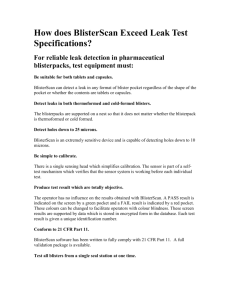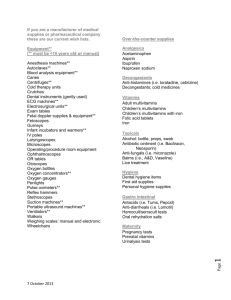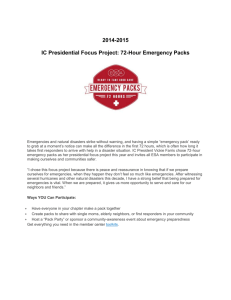guidelines for the use of blister packs
advertisement
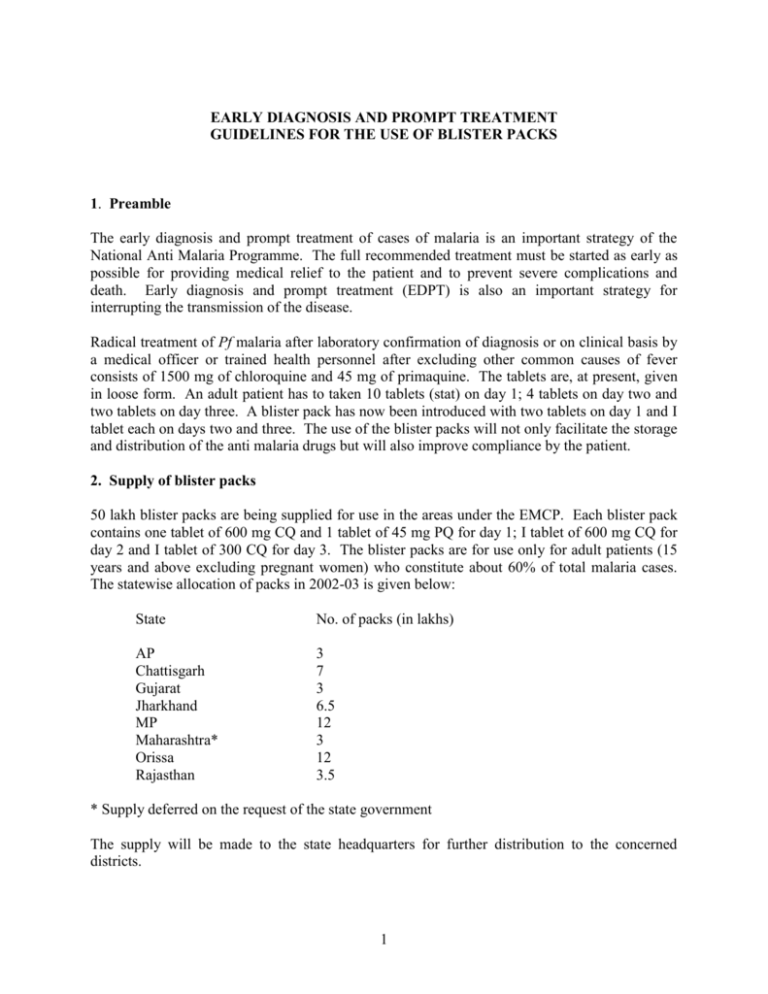
EARLY DIAGNOSIS AND PROMPT TREATMENT GUIDELINES FOR THE USE OF BLISTER PACKS 1. Preamble The early diagnosis and prompt treatment of cases of malaria is an important strategy of the National Anti Malaria Programme. The full recommended treatment must be started as early as possible for providing medical relief to the patient and to prevent severe complications and death. Early diagnosis and prompt treatment (EDPT) is also an important strategy for interrupting the transmission of the disease. Radical treatment of Pf malaria after laboratory confirmation of diagnosis or on clinical basis by a medical officer or trained health personnel after excluding other common causes of fever consists of 1500 mg of chloroquine and 45 mg of primaquine. The tablets are, at present, given in loose form. An adult patient has to taken 10 tablets (stat) on day 1; 4 tablets on day two and two tablets on day three. A blister pack has now been introduced with two tablets on day 1 and I tablet each on days two and three. The use of the blister packs will not only facilitate the storage and distribution of the anti malaria drugs but will also improve compliance by the patient. 2. Supply of blister packs 50 lakh blister packs are being supplied for use in the areas under the EMCP. Each blister pack contains one tablet of 600 mg CQ and 1 tablet of 45 mg PQ for day 1; I tablet of 600 mg CQ for day 2 and I tablet of 300 CQ for day 3. The blister packs are for use only for adult patients (15 years and above excluding pregnant women) who constitute about 60% of total malaria cases. The statewise allocation of packs in 2002-03 is given below: State No. of packs (in lakhs) AP Chattisgarh Gujarat Jharkhand MP Maharashtra* Orissa Rajasthan 3 7 3 6.5 12 3 12 3.5 * Supply deferred on the request of the state government The supply will be made to the state headquarters for further distribution to the concerned districts. 1 3. Criteria for the selection of areas and use of blister packs The blister packs are for use in the districts under EMCP. Once the blister packs have been successfully operationalized in the EMCP districts their use can be considered for other high risk areas in non-EMCP districts. Within the EMCP districts priority for supply should be given to the areas with high disease burden due to malaria including high API, high proportion of P falciparum cases and high SPR. The blister packs should be used in all health facilities with laboratory testing facilities so that the patients testing positive for malaria can be given immediate radical treatment on the same day preferably or latest by the next day. No presumptive treatment should be given in such places. Presumptive radical treatment can be provided on clinical diagnosis by a medical officer or trained para medical personnel in high-risk areas during the high transmission season after excluding other common causes of fever (acute respiratory infections, cold with running nose, skin rash suggestive of eruptive illness, burning micturition, skin infections such as boils, abscess, infected wounds, painful swelling of joints, ear discharge). Presumptive treatment with 600 mg CQ (adult patients) and suitable recommended doses for other age groups should continue to be provided by non health personnel in areas where examination of the blood slides cannot be done within two days. Radical treatment with the blister packs can be provided by MLVs/ FTDs in areas which are covered with the rapid diagnostic kits. The blister packs contain doses recommended for adults. These are not to be used in children 14 years or younger. Since the blister packs contain primaquine, these are contra-indicated in pregnancy. 4. Radical treatment of patients The recommended radical treatment with chloroquine (CQ) is 600 mg on day 1 and 2 and 300 mg on day 3 (total 1500 mg) for adult patients. 45 mg of primaquine (PQ) is given on day 1 to patients with Pf malaria. If the patient has Pv malaria, in addition to the blister pack, 15 mg primaquine daily for further 5 days should be given. Children 14 years and below and pregnant women should be treated as per the recommended schedule using loose tablets provided under the programme. 2 5. Preparatory activities It is important that preparatory work is done to ensure optimal use of blister packs and prompt radical treatment of patients with P. falciparum malaria. The following activities must be completed prior to the distribution of the RDTs. a. Selection of area(s) and prioritization by disease burden b. Allocation of blister packs by facility (hospital, health centre, subcentre) depending on the disease burden and the estimated number of patients. c. Preparation of the list of medical officers and para medical personnel for sensitization in the use of blister packs d. Written instructions to be issued to all concerned and the matter to be discussed at monthly meeting at all levels where blister packs are proposed to be introduced e. Arrangements for storage and supply of blister packs and tracking its use at all levels of the system f. Arrangements for field supervision and monitoring 7. Follow up action a. b. c. d. Regular field visits by supervisory officers to check blister pack use and radical treatment Monthly reports to include information on blister packs used for radical treatment Monitoring of fever cases and confirmed cases of malaria Monitoring of compliance of radical treatment 3
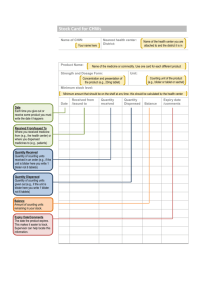

![First Aid Training : Bronze [Power Point]](http://s2.studylib.net/store/data/005424634_1-e0b0e5e602f7c1666ebc2e9ff3f4a1b5-300x300.png)
